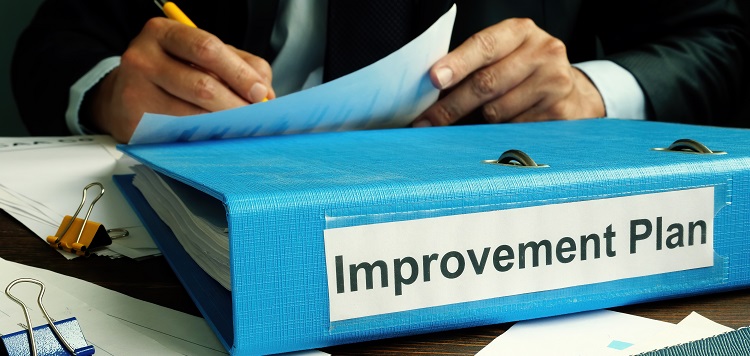As a manager, a part of your role is to ensure your employees are performing at a high level. When employees are struggling to meet expectations, it’s essential to address the issue quickly to prevent it from affecting overall performance. Performance improvement plans are an effective tool to guide employees to better performance. In this article, we will guide you through the key elements of a performance improvement plan and explain how to create one that is clear, achievable, and effective.
A Performance Improvement Plan (PIP) is a structured process used by employers to help struggling employees improve their performance in their job. It typically outlines specific performance goals and expectations and provides a timeline for the employee to make necessary improvements. The PIP is often used as a tool to help employees identify areas of weakness and work with their employer to develop solutions and strategies for improvement.
A Performance Improvement Plan (PIP) is a structured document that outlines specific actions an employee must take to improve their performance. It is designed to help the employee understand what they need to do to meet the expectations of their role and remain in the company. PIPs are typically used when an employee is struggling with their job performance, and the manager wants to provide guidance and support for improvement.
Components of a Performance Improvement Plan
When creating a performance improvement plan, there are three key components to consider:
1. Specific goals
The first step in creating a PIP is to identify the specific goals that the employee needs to achieve. These goals should be specific, measurable, achievable, relevant, and time-bound (SMART). Examples of SMART goals might include:
– Increase the number of customer service calls answered per hour by 10% within the next two weeks.
– Improve inventory count accuracy to 95% within the next month.
– Reduce the sales cycle by 20% over the next quarter.
2. Timelines
Once specific goals have been identified, it’s important to set timelines for achieving them. This helps ensure the employee is making progress towards improvement and can stay on track to meet their goals. Timelines should be clearly defined, with specific dates for when each goal should be achieved.
3. Performance Measures
To track progress, it is important to include specific performance measures in the PIP. These may include regular check-ins with the employee, assessments of their work, and feedback from colleagues. Performance measures should be clearly defined so that both the employee and the manager understand how progress will be tracked.
4. Outcome of performance improvement plans
The ultimate goal of any performance improvement plan is to help the employee improve their performance and remain with the company. However, statistics show that in 90% of cases, PIPs lead to an employee exiting the business. This is often due to the fact that the employee was not able to meet the expectations outlined in the plan.
Communicating the Need for a Performance Improvement Plan
When initiating a performance improvement plan, it’s essential to communicate clearly with the employee. Be direct about why you’ve decided to enact a PIP and what you hope to achieve. It’s also crucial to avoid surprises – the employee should be aware that their performance has been a concern and that a PIP is forthcoming.
Inviting Employee Input
Employee participation in a performance improvement plan (PIP) is essential to its success. When creating a PIP, it’s important to invite employee input to ensure they are engaged and motivated to improve. This may involve asking open-ended questions about their goals, concerns, and aspirations, as well as actively listening to their ideas and feedback. Addressing employee concerns and incorporating their input into the plan can help increase their buy-in and commitment to the process.
Making Clear, Concrete Goals
One of the most important aspects of a performance improvement plan is to ensure that you establish clear, concrete goals. The more specific and concrete the goals are, the easier it will be for the employee to understand what is expected of them. Additionally, setting achievable goals is important to keep employees motivated and engaged. If the goals are too lofty or unattainable, employees may become discouraged and give up on the plan.
Performance improvement plans can be a powerful tool for helping employees improve their performance and achieve their goals. By setting achievable goals, providing support, and soliciting employee input, you can create a plan that is effective and sustainable. Remember, the goal is not to punish or reprimand the employee, but rather to provide the guidance and support needed to achieve success. With planning, communication, and commitment, you can create a culture of high performance and success in your organization.

